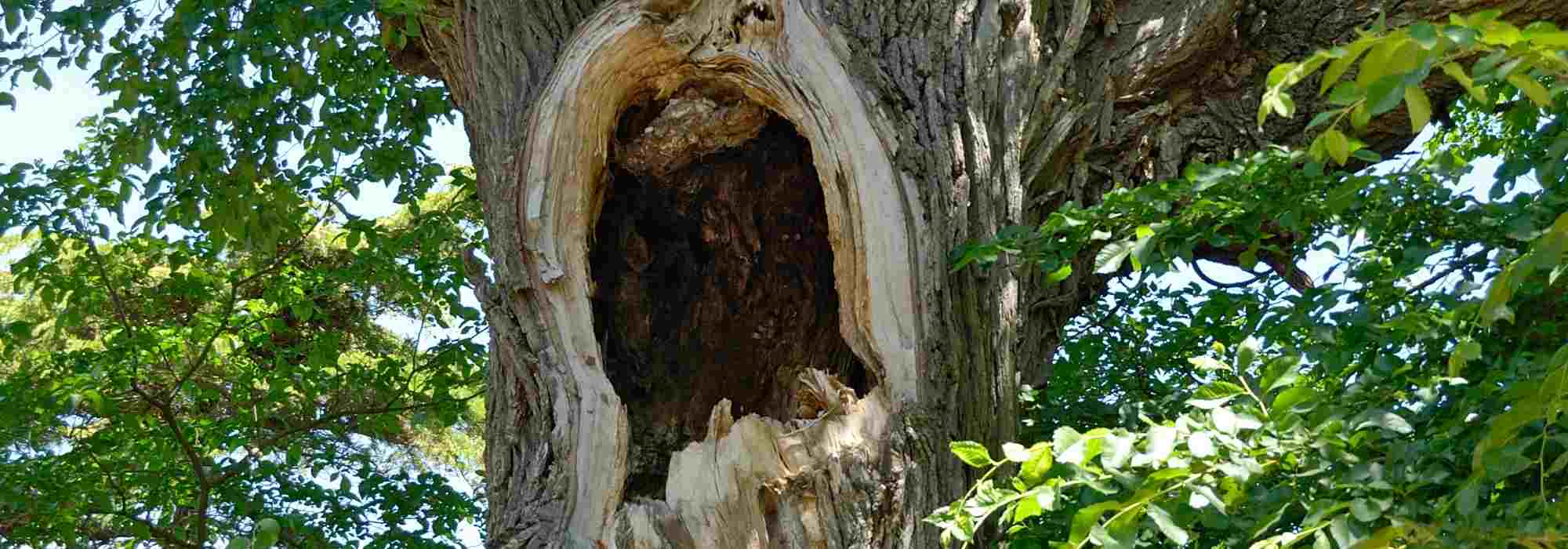
Hollow tree: what to do? Should you intervene?
Are cavities synonymous with tree death?
Contents
When a tree ages or has suffered accidents during its life, it is common to see holes of varying sizes forming here and there. These cavities are then found on the trunk or on the branches of the tree. The fact a tree becomes hollow often worries gardeners. But does the presence of cavities mean the tree is dead? What can be done to “fill in” this hole? But, actually, should we intervene at all?
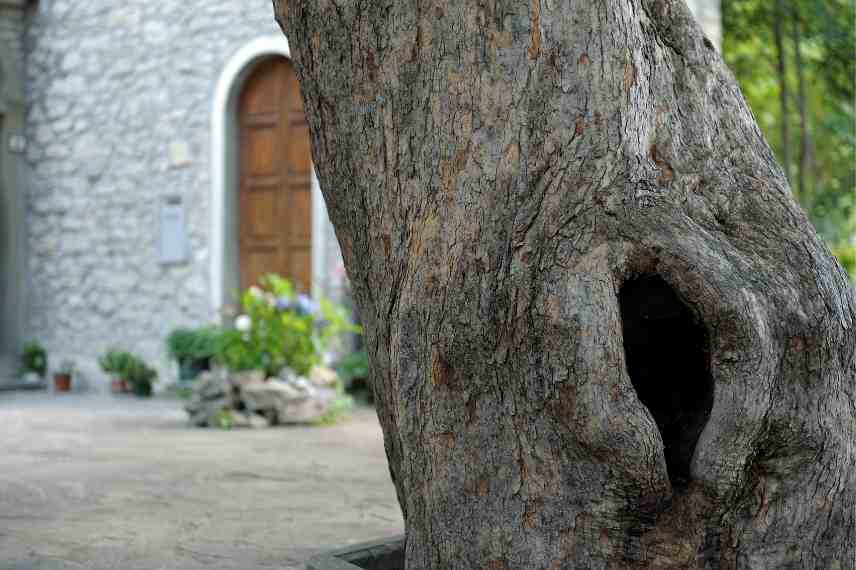
Why does a cavity form in a tree?
During a tree’s growth, in the wild as in the garden, some branches lacking light wither and fall naturally or break under the action of wind. Add to this pruning work carried out on our trees.
The place where the branch was « attached » then becomes a surface vulnerable to external aggressions: primarily weather events such as frost, rain and snow, wind, heat, or even lightning in the most severe cases. Other wounds can also appear following disease (canker), attack by animals (rodents, rabbits or deer) or… attack by the gardener with a lawnmower, a strimmer or during clumsy pruning.
These wounds allow wood-eating organisms — which feed on wood — to establish themselves. Fungi, insects and certain bacteria will then begin to bore a hole. Subsequently, this hole will be gradually enlarged by various animals that will use the cavity as a refuge or nesting site (various birds, small mammals…).
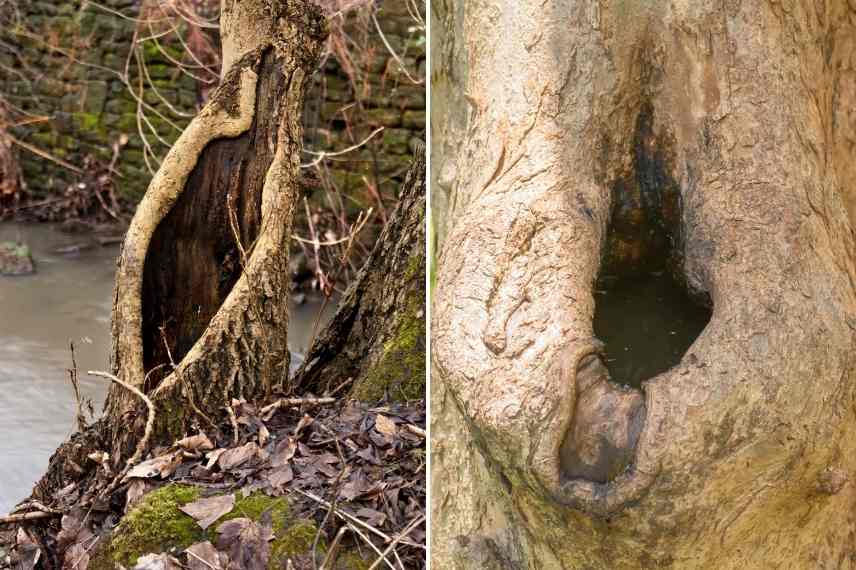
Cavities in a branch or trunk have several causes
A cavity is forming: how to fix it?
In the past, some characters filled holes in the bark of trees with concrete. Forget that! Definitely! Concrete favours rot by blocking aeration. Moreover, concrete is rigid while a tree is by definition flexible and living, which tends to widen the wound further. Some fix metal or wood plates to seal the entrance of cavities in certain old trees, with no greater success. Others try nailing wire mesh over the edges of the cavity: this fine-mesh wire will prevent large animals from continuing to dig or from taking up residence there. But it will not stop insects. A grille also prevents organic matter from lodging there and then rotting, such as dead leaves for example. In addition, the grille must be fixed with nails, which causes yet another wound. As you can see, all these outdated practices have generally done more harm than good!
A somewhat gentler and more effective solution can nevertheless be offered:
- A clay balm: clay is generally used for small wounds, but can also be used to “plug” a cavity without overly blocking aeration. First, clean the wound using a wire brush. Then pour green clay into a bowl and add water. Mix everything with a spatula until homogeneous, then apply a thick layer over the hole to be filled. Clay is natural and will remain in place only for as long as the tree heals itself. If your soil is very clayey, you can even use it. Some add a little vegetable oil to prevent the clay from cracking as it dries. Others once added a little cow dung (who said Yuck?), and called this mixture Saint Fiacre’s ointment.
If the cavity regularly fills with water, action should also be taken. A drain should be drilled to evacuate the water from the cavity. This drain will be fitted with a plastic pipe running from the bottom of the hole to the outside of the tree.
Please note: other solutions exist, such as wound-sealing putty to protect against external aggressions, but it tends to be too airtight and to trap the microorganisms responsible for disease; or Norway tar, which is totally ineffective and is even toxic to plant cells, slowing the healing process. Forget that too!
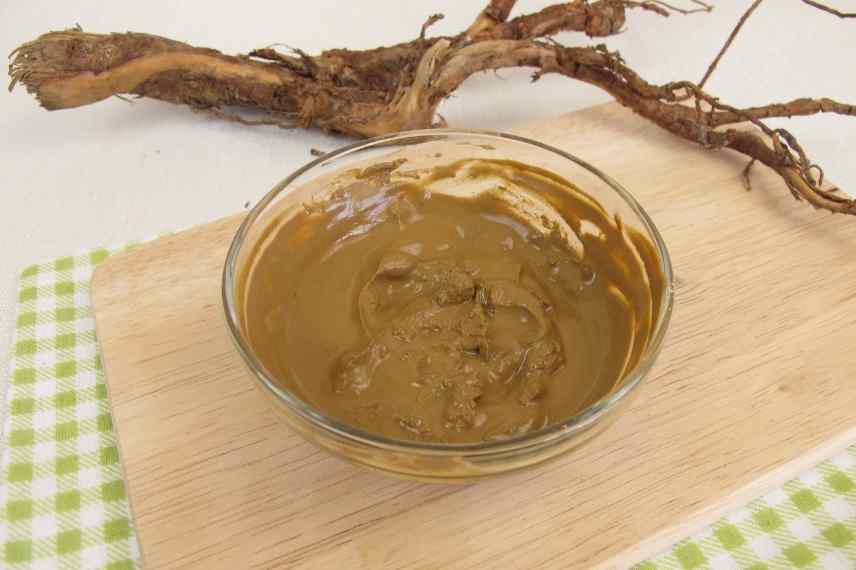
Clay: an excellent natural healing agent
Does a cavity really pose a danger to a tree's health?
What if we let nature take its course?
It’s the best solution! Presence of cavities in old trees is not necessarily a sign of imminent death. Some trees live to a very old age while riddled with holes: often the case with willows, lime trees, oaks, olive trees…
A cavity in a tree is above all a blessing for a site’s biodiversity, as it provides shelter for a multitude of animals, large and small.
Certain birds such as woodpeckers, tits, nuthatch and even little owl or sparrowhawk and many other so-called cavity-dwelling birds may nest there.
Mammals are no exception, because squirrels nest and hibernate in cavities, bats, dormice, edible dormice, stoats, beech martens, martens and even foxes (animals extremely useful for maintaining a balanced ecosystem) need them too.
Let’s not forget amphibians and reptiles such as frogs, geckos, some species of grass snakes or certain lizards. Certain solitary bees and a large number of beetles are entirely dependent on decaying wood, therefore on cavities. Don’t fear them; birds will regulate their numbers before they “devour” your tree. And let’s not even mention fungi!
If you want figures, know that with us and in forest medium, animal species requiring hollow trees or dead wood account for 23% of the medium’s biodiversity. That shows how vital it is to let trees live and die naturally.
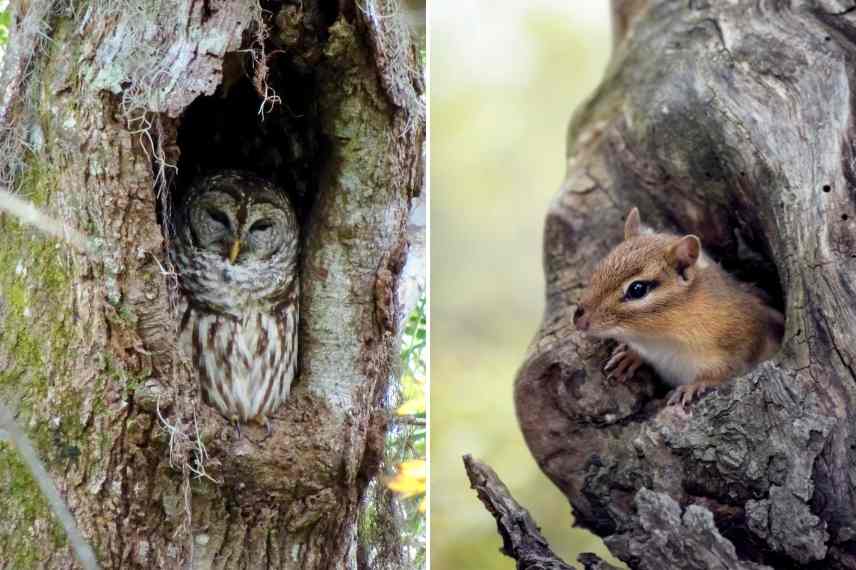
A whole array of wildlife finds refugium in tree holes
- Subscribe!
- Contents
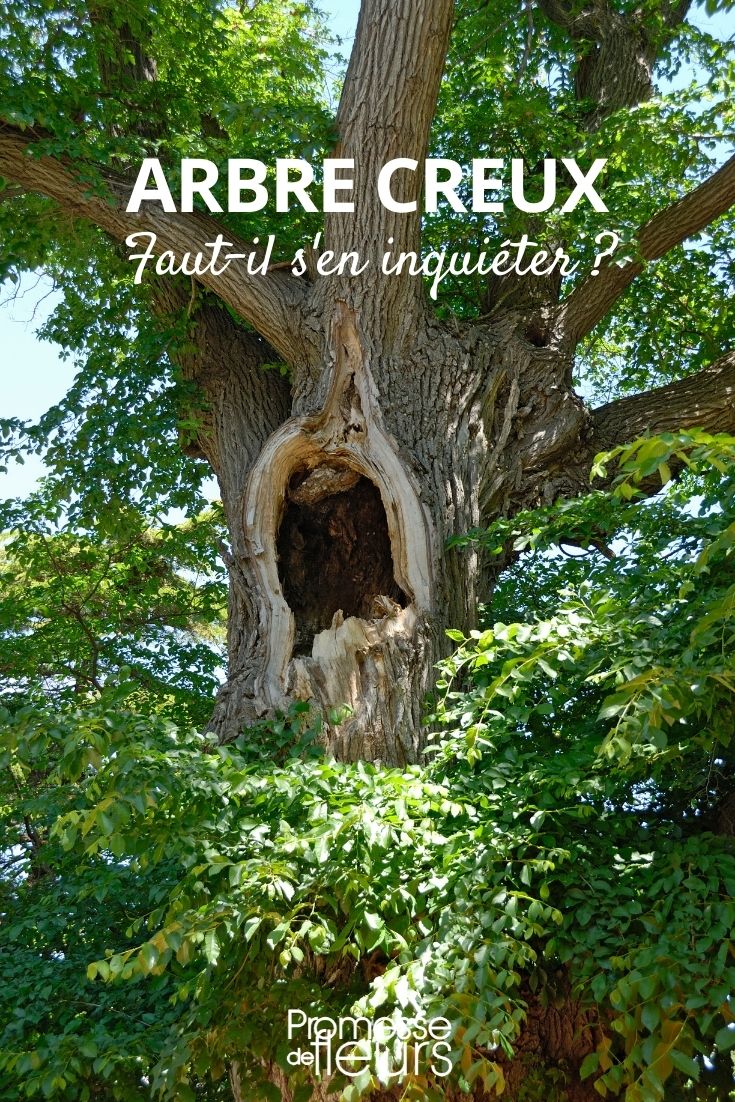































Comments